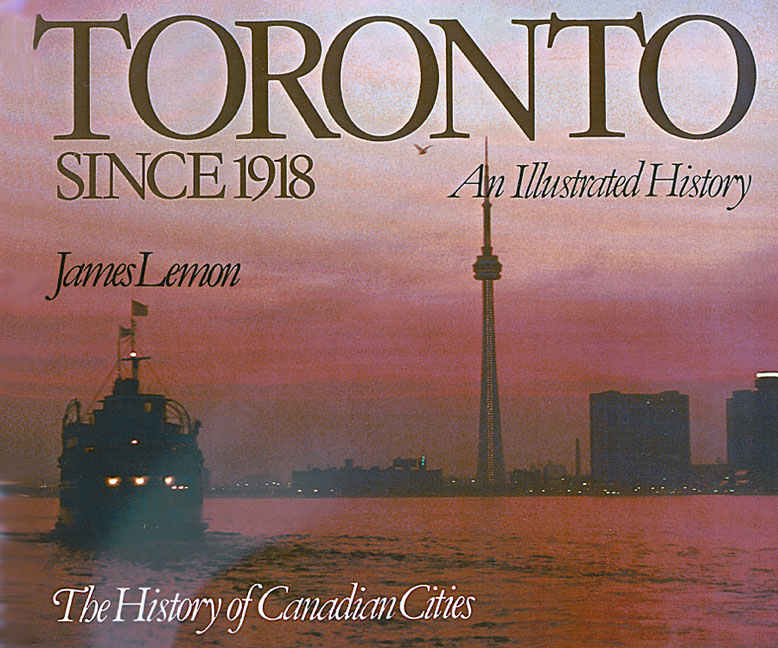Toronto Since 1918
An Illustrated History
by James Lemon
In Toronto Since 1918, first released in 1985, author James Lemon explores seventy years of Toronto's development.
During the twentieth century Torontonians have gone from pitying Cabbagetowners to envying them, from watching Lionel Conacher at a sandlot to watching the Blue Jays at the SkyDome. This book chronicles the immense changes that Canada's largest city has undergone in this frenetic period.
In 1918 Toronto was a provincial city with a half-million inhabitants, overwhelmingly British, Protestant and Tory. Today the city is undeniably world-class, its three million inhabitants gathered from all over the polyglot globe. Despite this metamorphosis, however, Toronto's resilient social fabric endures. Urban planners consider Toronto "the city that works"; other Canadians know it works, sometimes perhaps too hard and too well.
Toronto Since 1918 gathers the manifold strands of this great urban tapestry, bringing the city to life with an incisive, engaging text illustrated with more than 150 historical photographs.
In 1918 Toronto was a provincial city with a half-million inhabitants, overwhelmingly British, Protestant and Tory. Today the city is undeniably world-class, its three million inhabitants gathered from all over the polyglot globe. Despite this metamorphosis, however, Toronto's resilient social fabric endures. Urban planners consider Toronto "the city that works"; other Canadians know it works, sometimes perhaps too hard and too well.
Toronto Since 1918 gathers the manifold strands of this great urban tapestry, bringing the city to life with an incisive, engaging text illustrated with more than 150 historical photographs.
About the Author
Reviews
"Excellent ... a well-researched and well-written chronicle of a big Canadian city's growth."
Canadian Geographic
"Toronto Since 1918 will be indispensable to those who claim to know their city."
Toronto Star





